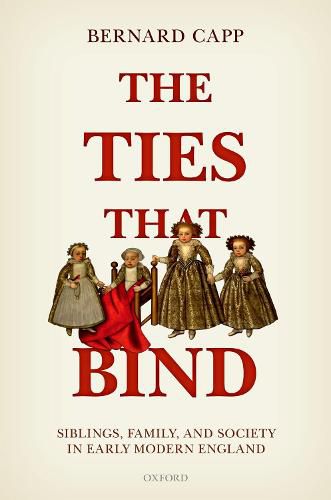Readings Newsletter
Become a Readings Member to make your shopping experience even easier.
Sign in or sign up for free!
You’re not far away from qualifying for FREE standard shipping within Australia
You’ve qualified for FREE standard shipping within Australia
The cart is loading…






The family is a major area of scholarly research and public debate. Many studies have explored the English family in the sixteenth and seventeenth centuries, focusing on husbands and wives, parents and children. The Ties that Bind explores in depth the other key dimension: the place of brothers and sisters in family life, and in society. Moralists urged mutual love and support between siblings, but recognized that sibling rivalry was a common and potent force. The widespread practice of primogeniture made England distinctive. The eldest son inherited most of the estate and with it, a moral obligation to advance the welfare of his brothers and sisters. The Ties that Bind explores how this operated in practice, and shows how the resentment of younger brothers and sisters made sibling relationships a heated issue in this period, in family life, in print, and also on the stage.
$9.00 standard shipping within Australia
FREE standard shipping within Australia for orders over $100.00
Express & International shipping calculated at checkout
The family is a major area of scholarly research and public debate. Many studies have explored the English family in the sixteenth and seventeenth centuries, focusing on husbands and wives, parents and children. The Ties that Bind explores in depth the other key dimension: the place of brothers and sisters in family life, and in society. Moralists urged mutual love and support between siblings, but recognized that sibling rivalry was a common and potent force. The widespread practice of primogeniture made England distinctive. The eldest son inherited most of the estate and with it, a moral obligation to advance the welfare of his brothers and sisters. The Ties that Bind explores how this operated in practice, and shows how the resentment of younger brothers and sisters made sibling relationships a heated issue in this period, in family life, in print, and also on the stage.